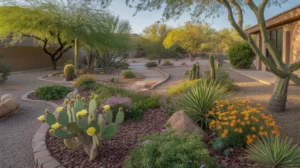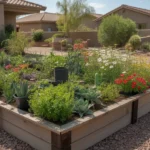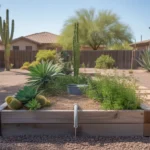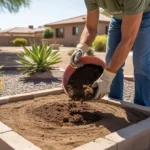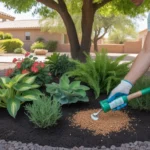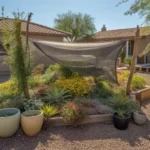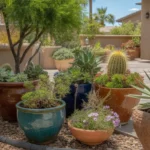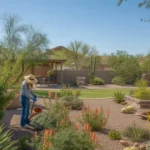As the warm spring sun returns to Mesa, it’s time to awaken your garden from its winter slumber. With some thoughtful preparation and a bit of elbow grease, you can transform your yard into a lush desert oasis that will be the envy of the neighborhood. Here’s our expert guide to spring gardening in Mesa, tailored to help your plants thrive in the unique challenges of the Sonoran Desert climate.
Preparing Your Soil for Spring Planting
Before you start planting, it’s crucial to get your soil in top condition. Mesa’s alkaline clay soil can be tough on plants, so amending it is key. Work in a generous amount of organic matter like compost or well-rotted manure to improve drainage and soil structure. This will help your plants’ roots grow deep and strong.
For an extra boost, consider adding a slow-release fertilizer formulated for desert plants. Look for blends with lower phosphorus, as native plants are adapted to the naturally low phosphorus levels in desert soils. Gently mix in the amendments and fertilizer with a garden fork, being careful not to disturb any existing plant roots.
If you’re creating new garden beds, consider building raised beds or berms. This allows you to completely control the soil mix and provide optimal growing conditions for your plants. Fill raised beds with a blend of native soil, compost, and coarse sand for excellent drainage.
Choosing the Right Plants for a Mesa Spring Garden
When it comes to plant selection, embrace the beauty of the desert by choosing native and low-water varieties that are well-adapted to Mesa’s climate. Spring is the perfect time to plant heat-loving perennials, cacti, and succulents that will thrive in the intense summer sun to come.
Some star performers for a Mesa spring garden include:
- Desert Marigold (Baileya multiradiata): Cheery yellow flowers blanket these low mounds of silvery foliage
- Penstemons: Hummingbirds flock to the tubular blooms in shades of pink, purple, and red
- Globe Mallow (Sphaeralcea ambigua): Abundant apricot blossoms appear on this drought-tolerant perennial
- Angelita Daisy (Tetraneuris acaulis): Bright yellow daisies cover this compact plant nearly year-round
For a stunning accent, plant a desert-adapted tree like a Palo Verde, known for its green trunk and brilliant yellow spring flowers, or a Texas Ebony with fragrant cream-colored blooms. Avoid planting frost-tender species like bougainvillea or hibiscus until all danger of a late frost has passed, typically by late February or early March in Mesa.
Pruning for Healthy Growth and Abundant Blooms
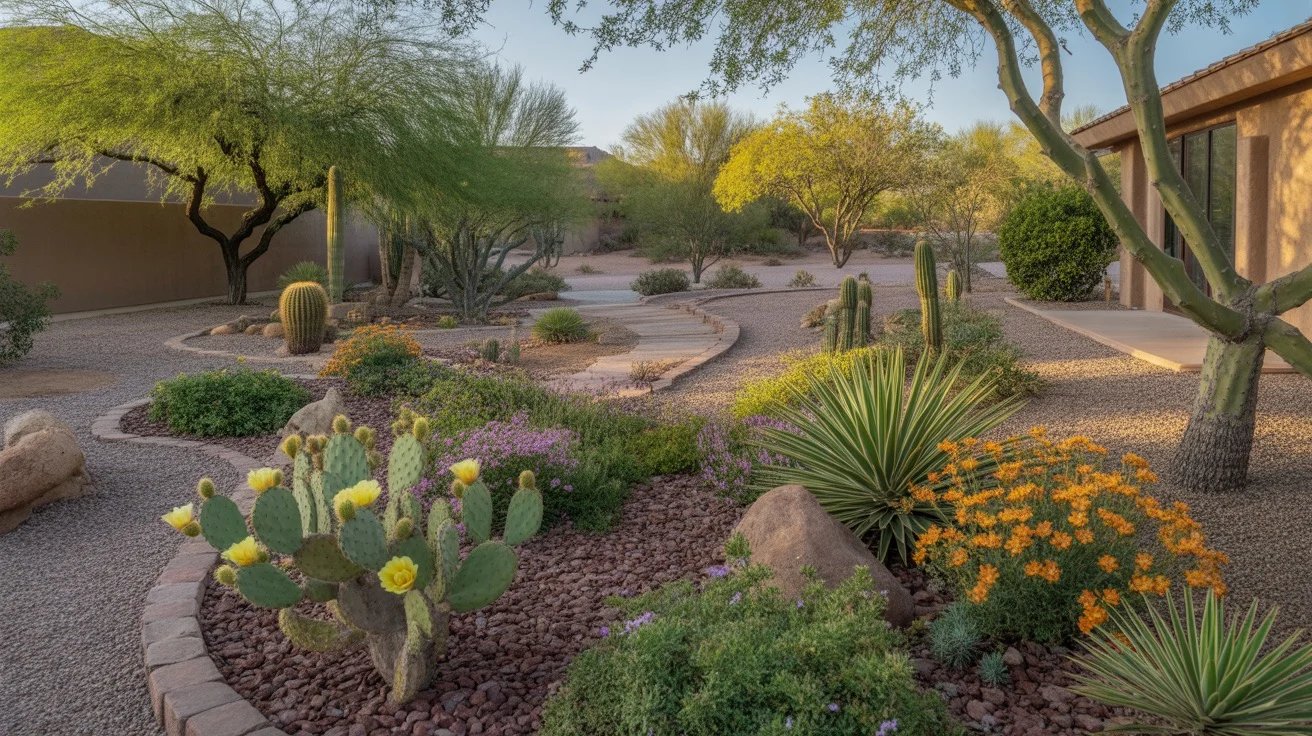
Spring is the ideal time to prune many desert plants to remove winter damage, control their size, and stimulate vigorous new growth. Wait to prune flowering shrubs like Texas sage or fairy duster until after they bloom to avoid cutting off the spring flower buds.
For most other shrubs and trees, prune in early spring just as the plants are beginning to leaf out. Use clean, sharp pruning tools to avoid damaging the plant. Remove any dead, damaged, or crossing branches first. Then selectively thin out crowded areas to open up the canopy and promote good air circulation.
Avoid shearing plants into unnatural shapes, as this stresses the plant and leads to a buildup of dense outer growth that blocks light and air from the center. Instead, prune selectively to maintain the plant’s natural form. Always prune with the plant’s mature size in mind to avoid constant pruning chores down the road.
Efficient Irrigation for a Thriving Mesa Yard
While spring brings occasional rains, Mesa gardens still rely on supplemental irrigation to look their best. Invest in an efficient drip irrigation system to deliver water directly to plant roots while minimizing evaporation and overspray. Run drip lines under a layer of organic mulch to further reduce moisture loss.
Program your irrigation controller to water deeply and infrequently, allowing the soil to dry out slightly between watering. This encourages plants to grow deep, drought-resistant roots. As temperatures climb, your plants will need more frequent watering. By summer, most desert-adapted plants will need a deep watering every 7-10 days.
For cacti and succulents, provide a deep soak about once a month in spring and summer. Let the soil dry out completely between watering to avoid rot. Always water in the early morning to give plants time to absorb the moisture before the intense midday heat.
Mulching for Moisture Retention and Weed Control
A layer of organic mulch is a desert gardener’s best friend. Spread a 3-4 inch layer of shredded bark, wood chips, or gravel around your plants, keeping it a few inches away from trunks and stems to prevent rot. Mulch helps retain soil moisture, moderates soil temperature, and suppresses weed growth.
For a polished look, choose a mulch that complements your garden’s style. Reddish shredded bark lends a natural look, while decomposed granite in shades of tan or gray creates a crisp, modern feel. Avoid using impermeable plastic sheeting under the mulch, as this can impede water and oxygen exchange in the soil.
As the mulch breaks down over time, it adds valuable organic matter to the soil. Replenish the mulch layer annually in spring to maintain its benefits and keep your garden looking fresh.
Enjoying the Fruits of Your Springtime Labor
As your spring garden bursts into bloom, take time to enjoy the beauty of the desert landscape you’ve created. Savor the fragrance of desert honeysuckle, delight in the antics of hummingbirds sipping from chuparosa, and relax in the dappled shade of your palo verde tree.
With a bit of know-how and some thoughtful tending, your Mesa garden will awaken from its winter slumber and thrive through the spring season and beyond. By working with nature and choosing desert-adapted plants, you’ll create a low-maintenance oasis that showcases the unique beauty of the Sonoran Desert.

